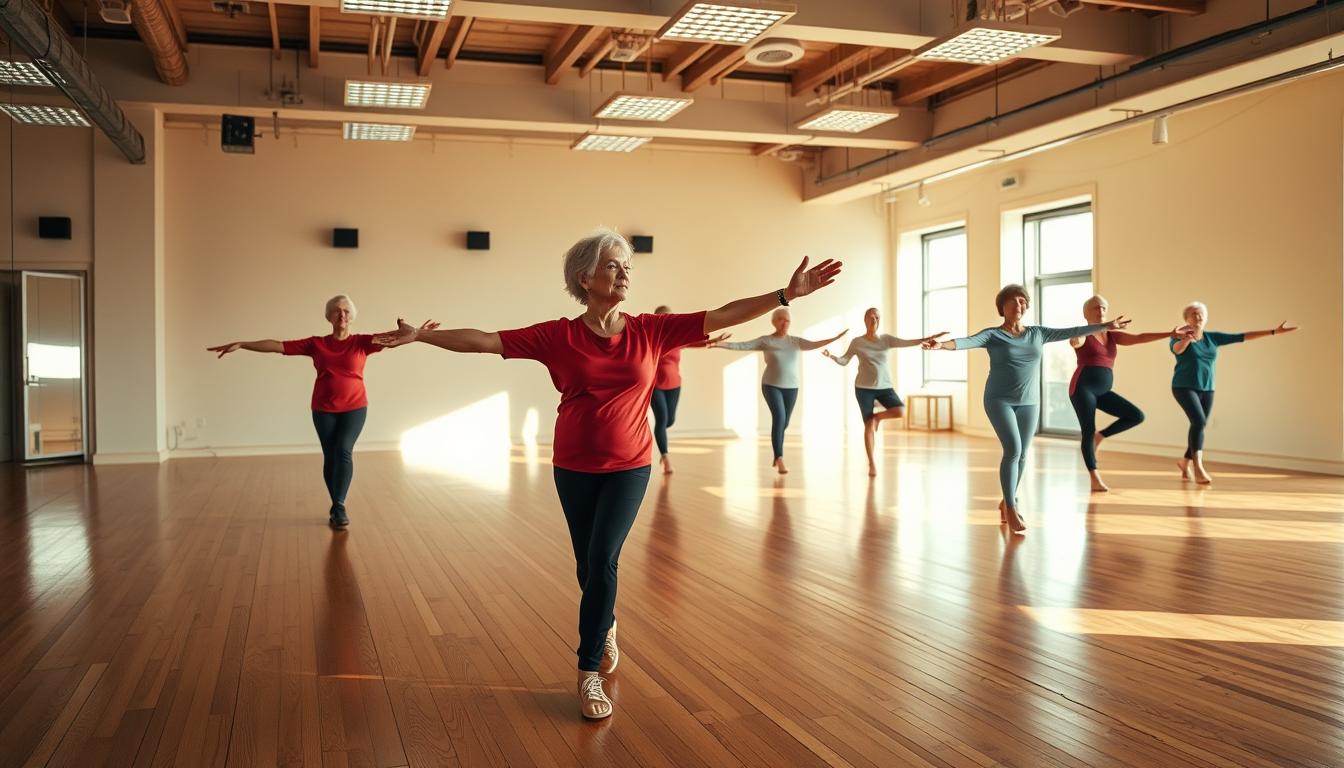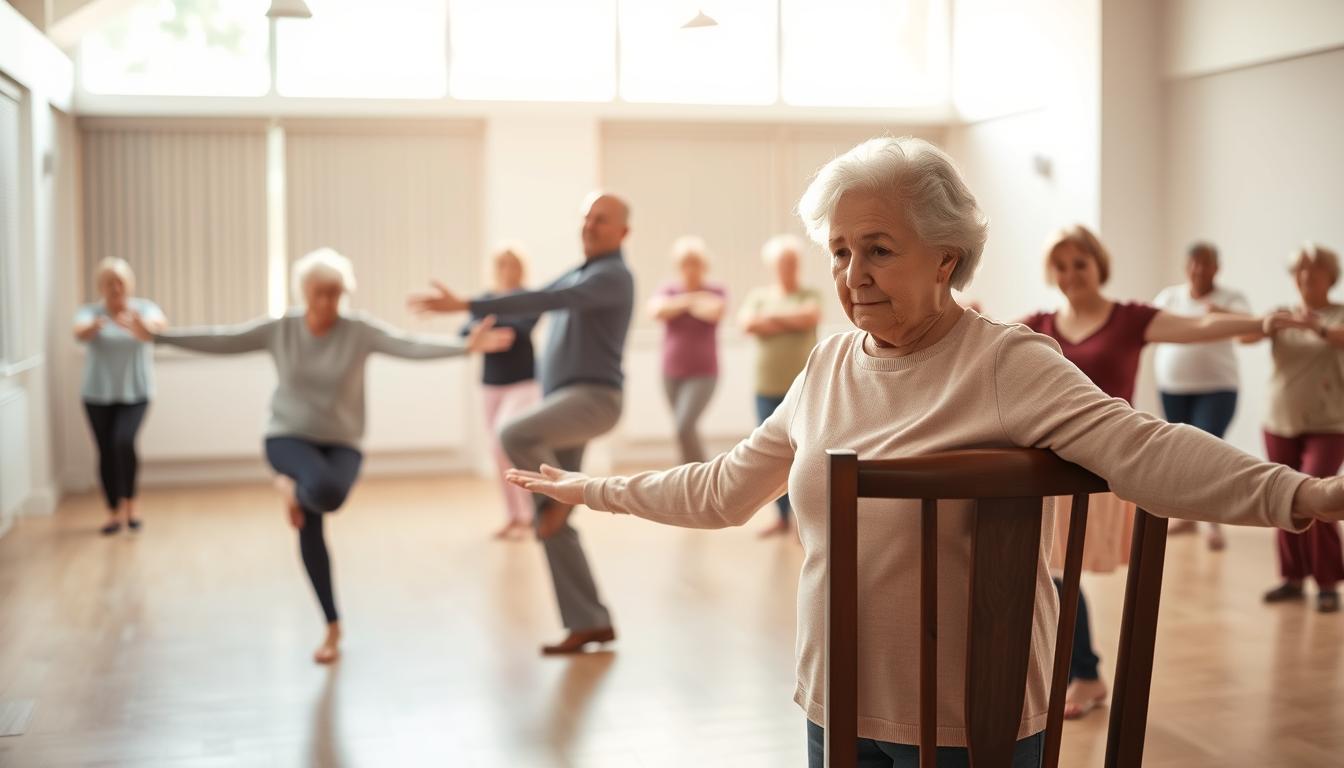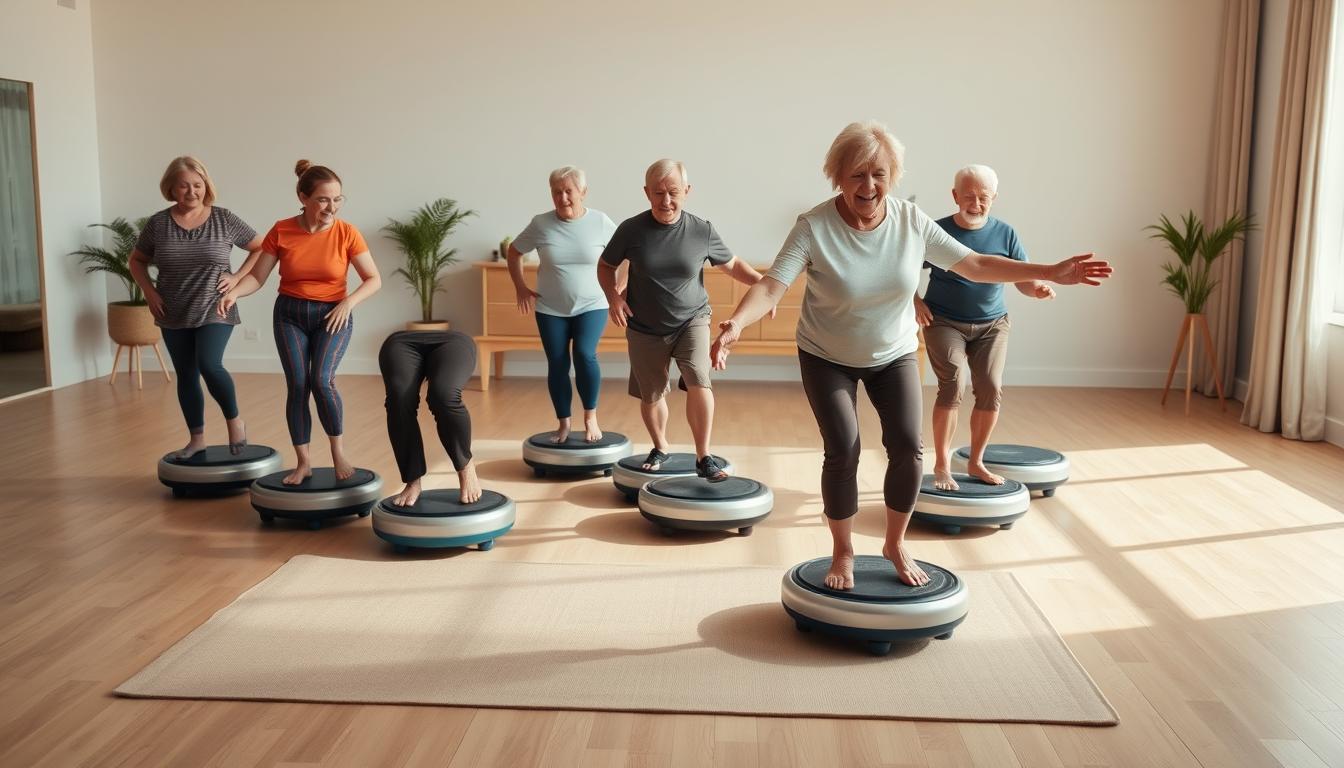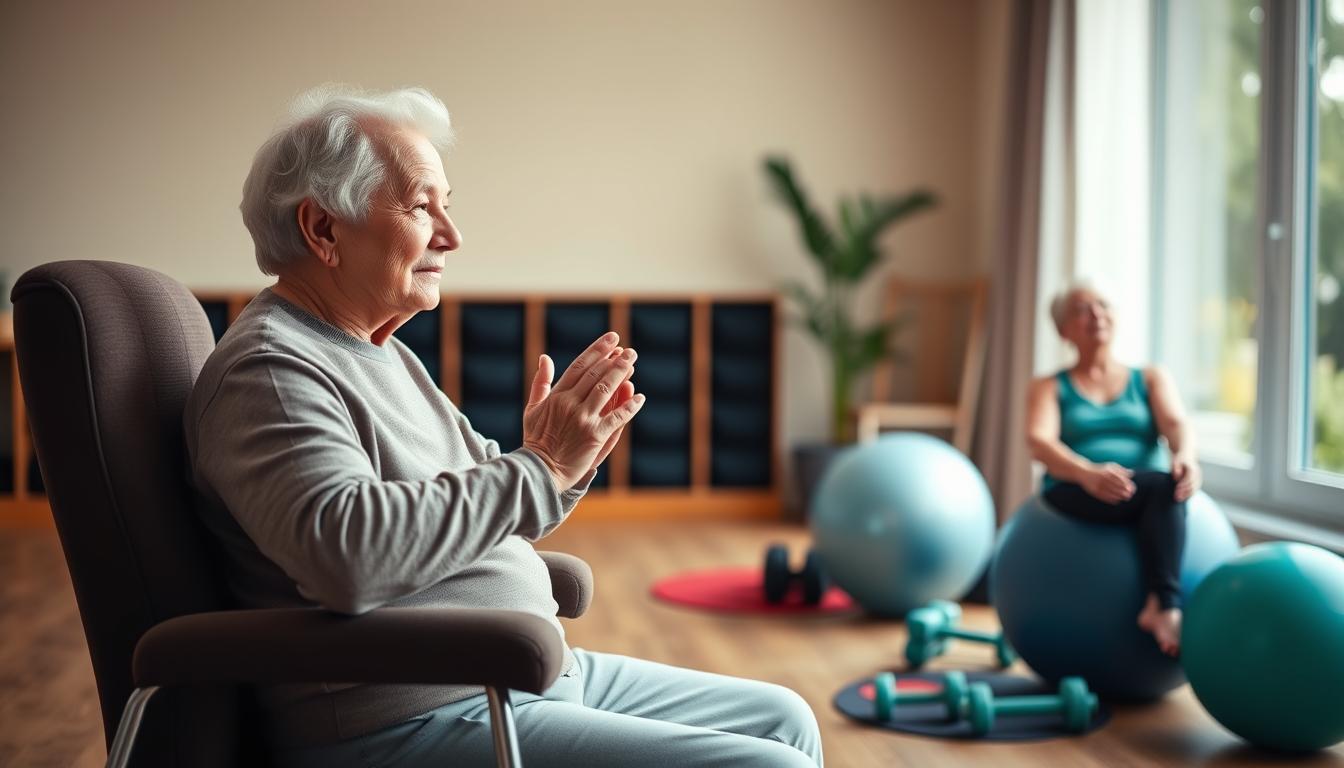Want to laugh in the face of gravity while keeping your hips and knees in working order? I’ve got you. Balance training isn’t just about avoiding spills—it’s about reclaiming your confidence in everyday moments, like reaching for a top shelf or chasing grandkids across uneven grass. The CDC says one in four older adults takes a tumble yearly, but here’s the kicker: research shows targeted movements can slash that risk faster than you can say “Where’d my reading glasses go?”
Let’s get real: You don’t need to become a tightrope walker. Simple tweaks to daily routines—think standing on one leg while brushing your teeth or practicing heel-to-toe steps near the kitchen counter—build stability muscles most folks ignore. My 72-year-old neighbor swears by her “coffee cup calf raises” during morning brew time. (Pro tip: Use a sturdy chair if your java hasn’t kicked in yet.)
Before we dive into the nitty-gritty, a quick reality check: Always chat with your doc first if you’ve got wonky inner ears or a history of dizziness. Safety’s sexy, friends. Now, who’s ready to turn laundry-folding into a core-strengthening session? Let’s make your legs as reliable as that ’90s rock playlist you still blast.
Understanding Balance and Its Impact on Senior Health

Did you know your inner ear plays quarterback for your balance? As we age, this biological gyroscope—along with weakening leg muscles and slower reflexes—can make staying upright feel like a part-time job. Let’s unpack why that morning coffee cup wobbles more than it used to.
How Aging Rewires Your Stability
Your body’s balance system relies on three players: eyes, inner ear, and proprioception (that fancy term for knowing where your limbs are). By 65, these teammates start missing passes. Dimming vision? Check. Thinning calf muscles? Yep. Even common meds for blood pressure or sleep can throw off your equilibrium like a tilted pinball machine.
Here’s the kicker: losing just 1% of leg strength yearly after 50 means your knees and hips work overtime. My neighbor Rita calls it the “slow-motion shuffle”—when stepping off curbs feels riskier than her ’83 skydiving phase. But here’s hope: targeted strength training can rebuild those stability muscles faster than you’d think.
Safety First, Always
Before attempting any new balance training, chat with your doc—especially if you’ve dealt with vertigo or dizziness. I’ve seen folks power through warning signs like stubborn mules, only to regret it later. A quick tip? Practice near a sturdy chair or countertop. Try standing on one leg while buttoning a shirt or slipping on shoes. If your ankles quiver like Jell-O, shorten the hold time.
Remember: progress beats perfection. Start with 10-second holds, building to 30 as your core and legs adapt. And if you’re rocking bifocals? Take them off during drills—blurry edges can trick your brain into misjudging distances. Safety isn’t about limitations; it’s about smart, sustainable wins.
Static Balance Exercises to Build a Strong Foundation

Let’s talk about building your balance like stacking bricks—steady, intentional, one layer at a time. Static holds might seem simple, but they’re the secret sauce for creating rock-solid stability. Think of these moves as your body’s anchor, teaching muscles to work as a team before tackling dynamic challenges.
Standing Feet Together and Tandem Stance Techniques
Start with feet hip-width apart—like you’re waiting in line for fresh-baked cookies. Squeeze your core and press evenly through both heels. Hold for 15 seconds. Too easy? Shift into tandem stance: one foot directly in front of the other, heel to toe. Pro tip: Use a wall or chair for light fingertip support if needed.
My client Martha calls this her “ninja training”—she practices while microwaving her tea. Can’t hold longer than 5 seconds? No sweat! Break it into 3 shorter attempts. Your ankles will thank you later.
Single-Leg Stance Variations and Rock the Boat
Lift one knee slightly—no need for chorus-line height. Focus on a spot ahead (not your wiggling toes!). Start with 10-second holds per leg. When that feels steady, try “rock the boat”: shift weight slowly from heels to toes, then side to side like a metronome.
Heads up: If your leg shakes like a washing machine, shorten the hold. Safety first—keep that chair within reach! These drills build muscle memory faster than you’ll believe. Soon, tying shoes standing up becomes your new party trick.
Advanced Balance Exercises for Seniors

Who knew a kitchen broom could moonlight as a balance coach? Let’s explore two game-changing moves that transform everyday objects into stability tools. These methods build confidence without demanding circus-level skills—perfect for sharpening focus while keeping safety within arm’s reach.
Tree Pose: Your New Morning Ritual
Plant one foot firmly like a redwood’s trunk. Rest the other foot against your ankle or calf—never the knee. Press your palms together at chest height. Hold for 10 breaths while imagining roots growing from your standing foot. My yoga buddy Ed swears by doing this while waiting for his toast to pop up.
Struggling? Place two fingers on a chair for light support. Progress to lifting your arms overhead like branches when ready. Bonus: This pose strengthens your core and ankles simultaneously—double the payoff!
Broomstick Balance: Playful Precision Training
Grab any stick-like object (umbrellas work great). Balance it vertically on your palm, then horizontally like a tightrope walker’s pole. Start with 15-second holds per hand. Too easy? Try tracing slow circles with the wand tip while keeping your body still.
Pro tip: Focus on a fixed spot ahead—your eyes help steady the wobbles. I’ve seen folks turn this into a coffee-break challenge: “Who can keep the broom upright longest?” Laughter optional but encouraged.
| Exercise | Focus Area | Support Level | Duration | Pro Tip |
|---|---|---|---|---|
| Tree Pose | Ankle/Core Strength | Chair Optional | 10-30 Sec | Engage abs like zipping tight jeans |
| Broomstick Balance | Hand-Eye Coordination | Countertop Nearby | 15-45 Sec | Start vertical, progress to horizontal |
Remember: Shaky legs mean you’re challenging your limits safely. Keep that chair close during initial attempts—it’s like having training wheels while learning to ride a bike. Before you know it, you’ll be folding laundry on one leg like a pro!
Partial-Body Dynamic Moves for Steady Movement
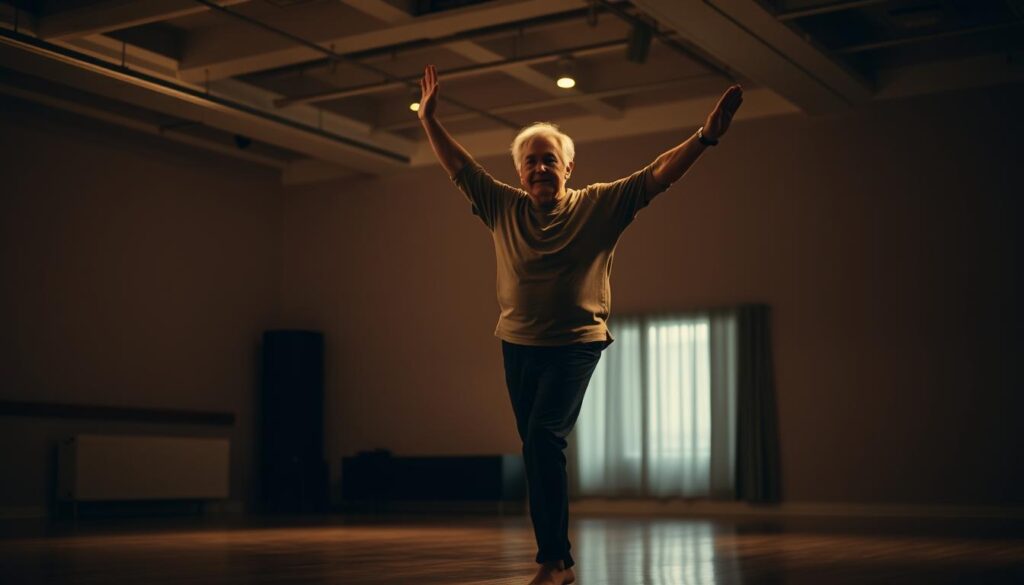
Ever tried patting your head while rubbing your belly? Let’s kick it up a notch. Partial-body drills train your core and limbs to work independently—like a conductor managing an orchestra. These moves sharpen coordination without overwhelming your whole body, making them perfect for building stability during daily tasks like sorting mail or watering plants.
Head Rotation and Toe Lifts with Controlled Breathing
Stand tall near a chair, feet hip-width apart. Slowly turn your head left while lifting both heels. Hold for 5 seconds. Return to center, then repeat right. Breathe like you’re sipping tea through a straw—steady and controlled.
Too wobbly? Try seated toe lifts first. My client Frank pairs this with his morning crossword: “3 head turns per clue” keeps him consistent. Progress to closing one eye during rotations to challenge your inner ear.
Heel Lifts Coupled with Foot Taps for Core Engagement
Rise onto your toes like you’re peeking over a fence. Tap one foot forward 4 times, then switch. Keep your belly button pulled toward your spine. Aim for 10 taps per side—imagine squishing bugs with your toes for motivation.
Advanced version: Lift arms overhead while tapping. If your legs protest, shorten the range. I’ve seen folks turn this into a kitchen counter game: “Tap the tile” while waiting for coffee to brew.
| Move | Focus | Duration | Modification |
|---|---|---|---|
| Head Rotation + Toe Lift | Neck/Calf Coordination | 5-10 sec holds | Use chair back for light grip |
| Heel Lift + Foot Tap | Ankle/Core Synergy | 8-12 reps/side | Reduce heel height if shaky |
Pro tip: These drills work best when your feet feel grounded. Wear flexible shoes or go barefoot—thick soles can trick your brain into misreading surfaces. Within weeks, you’ll notice smoother transitions from sitting to standing, like butter sliding across a warm pan.
Whole-Body Dynamic Routines to Enhance Everyday Mobility

Who says your living room can’t double as a dance studio? Let’s turn ordinary moments into full-body balance exercises that sharpen your coordination while making laundry days more exciting. These moves mirror real-life scenarios—like dodging sidewalk cracks or reaching for cereal boxes—so you’ll build functional strength without feeling like you’re “working out.”
Marching Patterns and Side-Step Walks in Real Time
Start with marching in place like you’re leading a parade. Lift each knee to hip height—no need for Rockette precision. Swing arms opposite to legs, just like walking. Aim for 20 seconds of steady rhythm. Too easy? Add heel taps on a low stool or phone book. My client Joan does this while microwaving oatmeal: “Three marches per beep keeps me honest!”
Side-step walks are stealth training for crowded aisles. Shift weight to one foot, step sideways with the other, then follow like a crab. Keep toes pointing forward—imagine skating on invisible rails. Do 8 steps each way near a countertop. Bonus: Grandkids love racing alongside you!
| Move | Muscles Worked | Duration | Pro Tip |
|---|---|---|---|
| Marching Patterns | Legs/Core | 20-40 sec | Hum your favorite song to keep rhythm |
| Side-Step Walks | Hips/Ankles | 8-12 reps/side | Pretend you’re avoiding hot lava |
Struggling? Lightly touch a chair back until confidence grows. Remember: Wobbly legs mean you’re challenging weak spots. Laugh it off—my neighbor Jim calls his shaky attempts “the sprinkler dance.” Within weeks, you’ll navigate cluttered floors like a nimble cat!
Targeted Exercises for Coordination and Strength Training
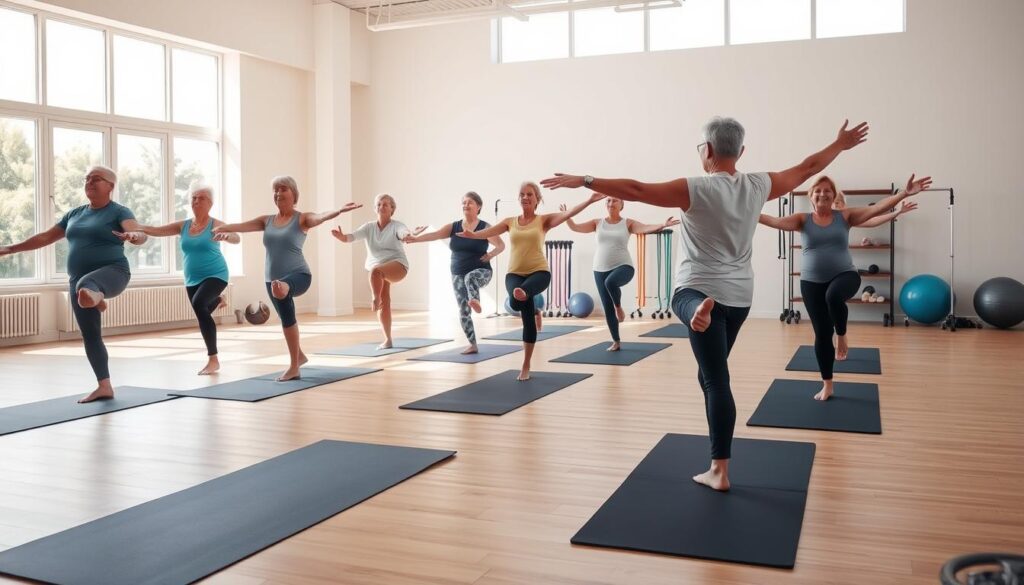
Ever tried high-fiving yourself while standing on one leg? Let’s turn that imaginary challenge into real-world stability. These two moves sharpen your reflexes while building strength where it counts—your hips, core, and those sneaky stabilizer muscles hiding in your ankles.
Single-Leg Raises: Your Secret Weapon
Picture this: Stand near a chair, feet hip-width apart. Lift one knee to front thigh height—like a flamingo waiting for a bus. Hold for 5 seconds while pressing through your standing foot. Lower slowly, tapping toes lightly. Do 8 reps per leg.
Too shaky? Rest fingertips on your support. My client Lou adds these while waiting for his denture adhesive to set: “Three lifts per leg keeps me from rushing.” Advanced version: Close your eyes halfway through—your body will learn to trust itself.
Cross-Body Punches: Core Meets Coordination
Try this move: Stand tall, knees soft. Punch diagonally across your body with one hand while lifting the opposite foot an inch off the floor. Alternate sides like a slow-motion boxer. Aim for 12 controlled reps total.
Pro tip: Imagine punching through wet clay—smooth resistance builds strength without strain. Can’t lift your feet? Keep toes grounded and focus on torso rotation. You’ll feel this in your obliques faster than grandkids raid the cookie jar.
| Move | Focus | Reps | Modification |
|---|---|---|---|
| Single-Leg Raises | Hip/Ankle Stability | 8 per leg | Use chair back for light touch |
| Cross-Body Punches | Core/Rotation Control | 12 total | Keep feet flat if needed |
Key detail: Breathe out during the effort—like blowing out birthday candles. Sync movements with your exhales to boost balance and focus. Within weeks, you’ll notice quicker recoveries when you trip on rugs or reach for grandkids mid-tumble!
Modifying Exercises to Suit Individual Abilities
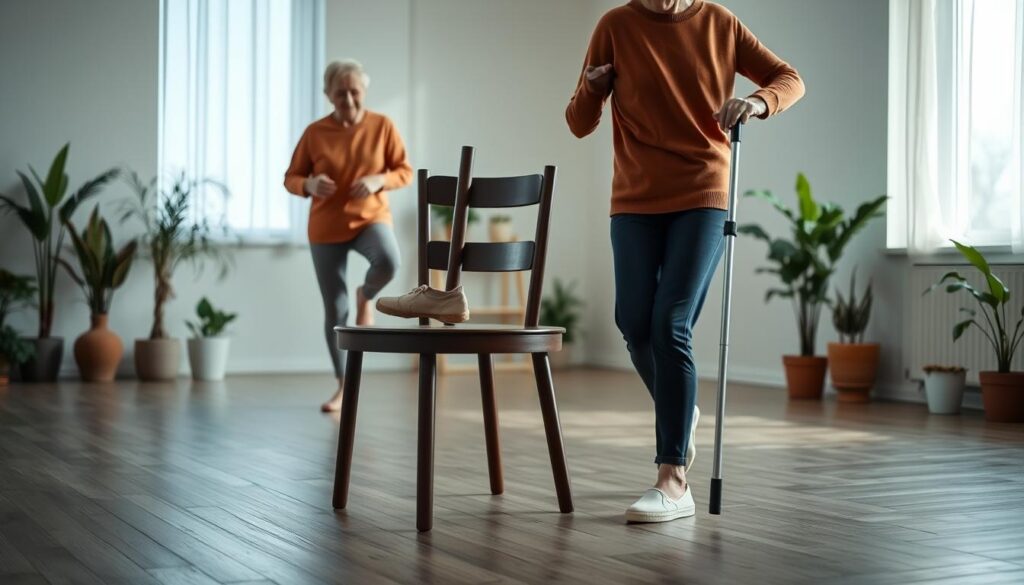
Think of balance training like adjusting your grandma’s famous soup recipe—everybody needs a different pinch of support. Your neighbor might crush single-leg stands while you need a chair nearby, and that’s perfectly normal. The magic happens when we tweak moves to match your current abilities while gently nudging progress.
Adjusting Support Levels and Introducing Light Weights
Start by testing your “wobble zone”: Stand near a countertop and lift one foot an inch. If your leg dances like a hula doll, keep two fingers on the surface. Progress to fingertip contact, then air-only attempts. My client Marge uses her walker as a mobile support station—she does side steps while pushing it ahead like a grocery cart.
Weight additions should feel like carrying a purse, not a piano. Try these upgrades:
- Swap soup cans for water bottles during arm raises
- Use ankle weights lighter than your morning coffee mug
- Place a folded towel under your standing foot for uneven surface training
Key rule: If you can’t chat while moving, reduce resistance. Research shows older adults gain more from controlled motions than heavy lifts. Your body isn’t a competition—it’s a lifelong partner needing thoughtful care.
Integrating Balance Training with Overall Fitness Strategies

What if your morning walk could sharpen your stability while boosting heart health? Let’s blend balance work into your existing routine like folding whipped cream into pancake batter—smooth, intentional, and oh-so-rewarding. Research shows pairing stability drills with cardio and strength sessions creates a “triple threat” against falls while keeping workouts fresh.
Merging Cardio, Strength Sessions, and Mindfulness Techniques
Try this during your next power walk: Pause every five minutes for 30 seconds of tandem stance (heel-to-toe) on a flat sidewalk. It’s like hitting pause on a podcast to let wisdom sink in—your legs get micro-challenges without derailing momentum. My client Ruth calls these “balance commercials” during her mall-walking laps.
Strength days? Pair squats with single-leg holds. Lower into a chair, then lift one foot an inch before standing. Bonus: Add arm raises while balancing to engage your core. Think of it as multitasking—like stirring soup while answering the doorbell.
Mindfulness ties it all together. After workouts, sit tall and trace slow circles with your ankles—focus on breath and movement. Studies show this combo reduces fall risk 34% faster than isolated exercises. Track progress with a simple calendar code: Star days you nail three balance moments (like standing on one leg while brushing teeth).
| Weekly Plan | Balance Boosters | Duration |
|---|---|---|
| Monday Walk | 3 tandem stance pauses | 20 minutes |
| Wednesday Strength | Squat + single-leg holds | 15 reps |
| Friday Mindfulness | Seated ankle rotations | 5 minutes |
Pro tip: Use waiting times—commercial breaks, coffee brewing—for 10-second foot taps or head turns. Your body doesn’t care if it’s “official workout time.” Consistency beats perfection every time.
Final Thoughts on Embracing Balance and a Confident Lifestyle
Ever notice how a tree stands firm through every storm? That’s the quiet power of balance exercises—they root you in strength while letting life’s chaos swirl around. My neighbor Barb started practicing single-leg stands while waiting for her coffee maker to gurgle. Now she jokes about her “espresso stability” as she navigates icy sidewalks with newfound ease.
What makes these movements stick? Consistency over complexity. A 10-second foot tap here, a side-to-side shift there—they add up like loose change in a jar. Research proves even brief daily drills sharpen reflexes and build leg muscles you forgot existed. But the real win? That mental boost when you tie your shoes without sitting or pivot smoothly to grab a ringing phone.
Your journey won’t look like anyone else’s. Maybe you’ll master the broomstick balance before nailing tree pose. Perhaps heel lifts feel like climbing Everest today but molehills next month. Celebrate the wobbles—they’re proof you’re pushing limits safely.
Fold these practices into your rhythm. Balance while sorting mail. Shift weight foot-to-foot during commercials. Each micro-session stitches confidence into your body’s memory. Before long, you’ll move through the world like you own the ground beneath you—because you’ve literally trained for it.
